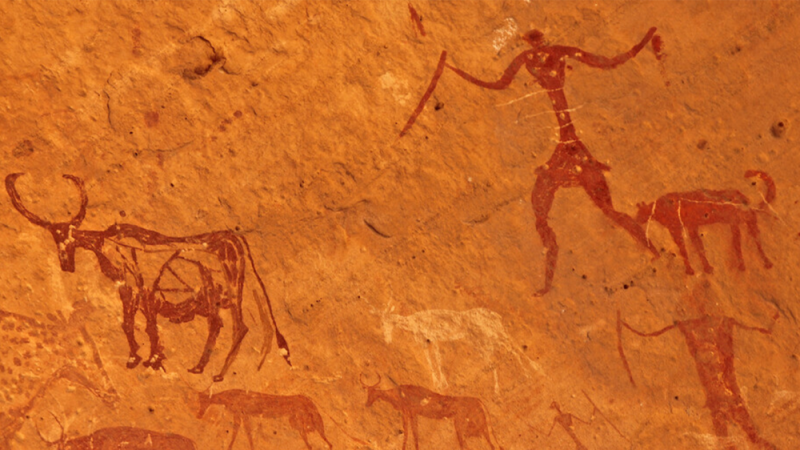How sweat and stamina helped make humans exceptional runners–and hunters

Endurance running is not just a hobby for modern marathoners or for posting on social media. A new look into the anthropological history of endurance running when hunting for game shows that it may be just as efficient as other more traditional hunting methods like foraging. The findings are described in a study published May 13 in the journal Nature Human Behaviour and supports an idea called the endurance pursuit hypothesis.
“People who frequently practice running will know that when practiced on a regular basis, running becomes relatively easy,” study co-authors and evolutionary anthropologists Eugène Morin of Trent University in Canada and Bruce Winterhalder from the University of California, Davis tell PopSci. “From this, it is easy to envision how it could have conferred a selective advantage in hunting.”
What is the endurance pursuit hypothesis?
Initially, some anthropologists believed that running long distances in pursuit of game would have been taxing to the human body and not worth the trouble. A more slow paced pursuit was believed to be the better method to both get food while preserving strength.
Endurance pursuit hypothesis posits that the human ability to run long distances is an adaptation that began roughly two million years ago.
[Related: Humans are natural runners—and this ancient gene mutation might have helped.]
“Unlike other mammals, including other primates such as chimpanzees, humans can sweat profusely and have lower limb muscles evolved for stamina rather than power,” Morin and Winterhalder say. “If economical and successful, endurance pursuits of medium-to-large game in a tropical environment could have [been] selected for that unique combination of traits: sweating and stamina.”
However, there have been few reports of contemporary humans using these endurance pursuits. Running long distances is generally viewed as energetically costly, and thus not worth it.
A game-hunting advantage
In their new study, Morin and Winterhalder studied roughly 400 recorded instances dating from the early 1500s to the early 2000s to investigate the role of endurance running while hunting. These included some first-hand accounts of different nomadic groups including the Evenki people in Siberia, the Innu in Canada, the Mbuti in the Democratic Republic of Congo, the Pitjantjatjara in Australia, the Inuit in Alaska, and more. Some of these ethnographic sources revealed that hunters sometimes ran over 62 miles in one pursuit.
In addition to reviewing these accounts, the team used mathematical modeling to look at the various scenarios that could play out over a pursuit. They varied the size of the prey, how quickly or slowly a human pursued the animals (walking or running), and the distance covered.
The models found that in the right context, faster-paced endurance pursuit can increase energy returns. The models revealed that the calorific gains of endurance running were comparable to other hunting methods.
[Related: Why are humans good at endurance running? The answer is murky.]
“We were able to show that running or a mix of running and walking can be efficient, and it was a global practice by foragers prior to the modern era,” Morin and Winterhalder say. “In short, endurance pursuits would have provided hominins with an evolutionary advantage while competing with carnivores for game.”
The study suggests this type of hunting strategy would have been available to Pleistocene hominins (2.6 million to 11,700 years ago) and may also have had a role in human evolution. However, Morin and Winterhalder stress that this work does not speak directly to human’s evolutionary past, since it relies on ethnographic accounts from recent history.
Cultural bias
The team was surprised by the number of cases of long endurance pursuits that they found in environments that ranged from the bitter cold Canadian tundra to the more humid mountains of Hawaii. They also found that the study highlights a cultural bias in anthropology.
“Committed recreational joggers and runners aside, Westerners tend to see running as ‘arduous,’ ‘costly,’ ‘challenging,’ and so on,” Morin and Winterhalder say. “In contrast, our observational data highlights Native societies that have encouraged and valued running, often for men, women and children, and in races and festive celebrations, as well as hunting.”
Morin and Winterhalder are currently working on another paper on endurance pursuits with more detail that assesses what may have motivated hunters and what seasons saw more endurance hunting. They are also working with collaborators Rebecca Bliege Bird and Doug Bird from Penn State on a study that will examine the division of labor in hunting.










